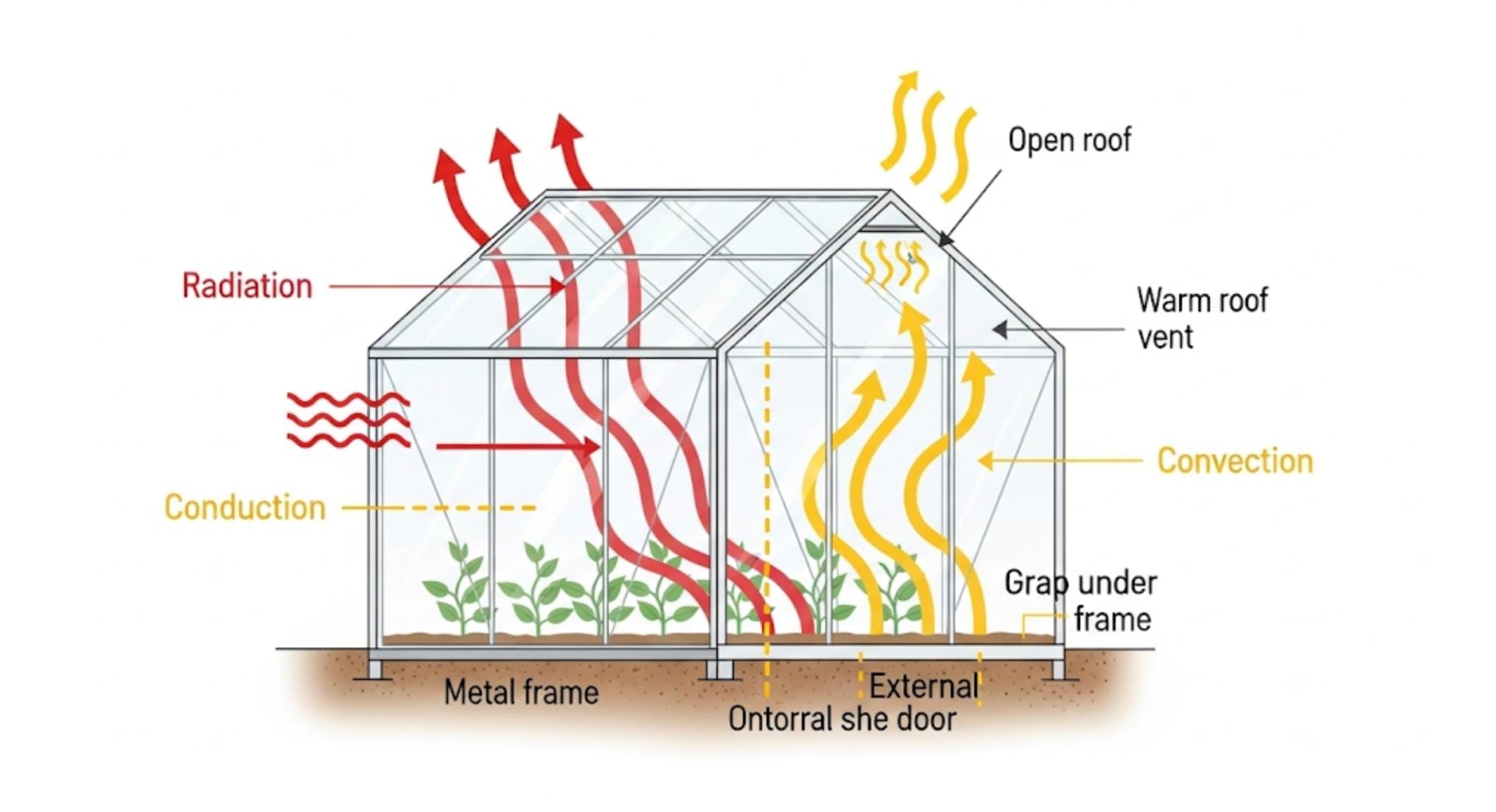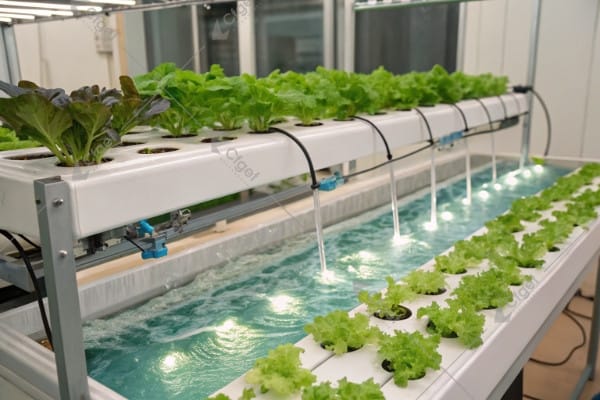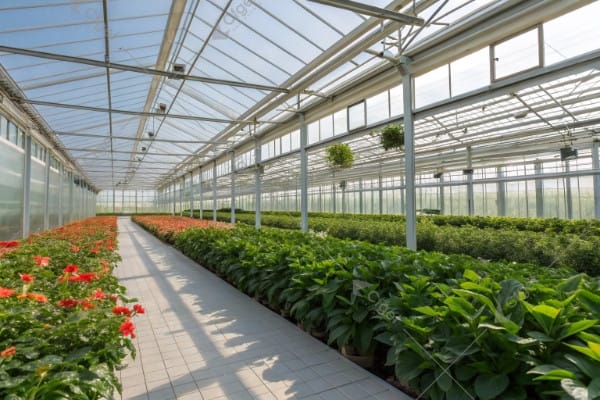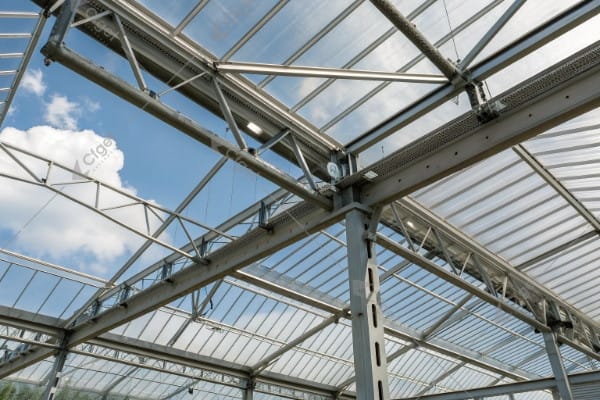Growing orchids requires specific environmental conditions that many beginners struggle to maintain. Without the right greenhouse, your precious orchids may wither despite your best efforts.
Choosing the right orchid greenhouse means balancing size, materials, climate control systems, and structural design. Your selection should account for both orchid growing requirements and your local climate conditions to create an optimal growing environment.
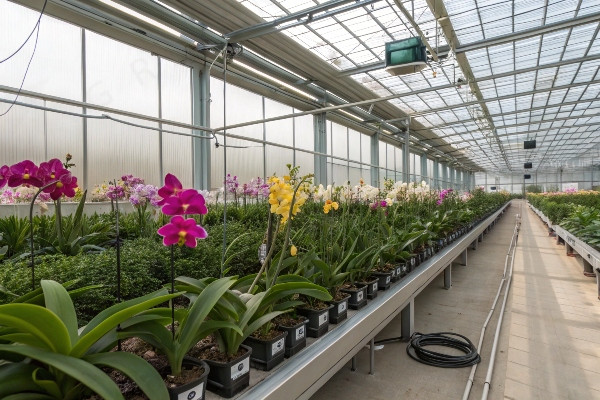
After 28 years in the greenhouse industry at CFGET, I’ve seen countless orchid enthusiasts transform their growing results with the right greenhouse setup. The difference between struggling with basic setups and thriving with a properly designed greenhouse is remarkable. As we explore the key factors in selecting your orchid greenhouse, remember that each decision should serve both your plants’ needs and your local climate conditions.
Don’t Miss:——Choosing the Right Greenhouse: A Complete Buyer’s Guide
You might like:——What Makes a Greenhouse Ideal for Orchids? Key Features Explained
Size and Scale: Selecting a Greenhouse for Your Orchid Needs?
Many orchid growers start too small and quickly run out of space as their collection grows. Without proper planning, expansion becomes costly and disruptive to your established plants.
The ideal orchid greenhouse size depends on your current collection, growth plans, and available space. For beginners, start with at least 80 square feet, while serious collectors should consider 200+ square feet with room for expansion.
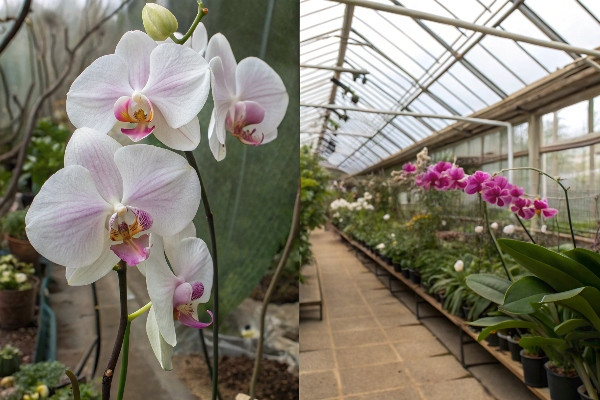
When I first started designing greenhouses for orchid enthusiasts, I noticed a pattern. Almost every client would return within two years wanting to expand their growing space. Orchid collecting tends to grow exponentially – you start with a few plants, then suddenly you’re bidding in specialty auctions and joining exchange groups!
The size of your orchid greenhouse impacts far more than just how many plants you can house. It directly affects your ability to create microclimates, maintain stable environmental conditions, and organize your collection efficiently. Let me break down some key considerations based on collection size:
Hobby Growers vs. Serious Collectors
For hobby growers with fewer than 50 plants, a small greenhouse between 80-120 square feet can work well. This size allows for basic benching systems and some environmental segregation. I recommend incorporating adjustable shelving from the start, as this maximizes your vertical space.
Serious collectors with 100+ plants should look at 200+ square feet at minimum. During a project in Thailand, we designed a 350 square foot greenhouse for a Paphiopedilum specialist that included three distinct growing zones within the same structure. This allowed for specialized conditions for different orchid types.
Remember that working space is just as important as plant space. I once visited a beautiful greenhouse in Europe that was packed wall-to-wall with orchids – but the owner could barely move inside to care for them! Plan for at least 30% of your greenhouse footprint to remain as workspace and walkways.
Height matters tremendously for orchids. Many varieties, particularly Vandas and similar species, appreciate vertical hanging space. A minimum interior height of 7 feet is recommended, with 9-12 feet being ideal for serious collections. During our installation in Central Asia, we created a 14-foot peak height to accommodate hanging specimens while allowing heat to rise away from plants in summer.
Glazing Materials Compared: Polycarbonate vs. Glass for Orchids?
Choosing the wrong glazing can lead to scorched plants in summer or frozen roots in winter. Many growers underestimate how drastically glazing choice affects light quality and energy costs.
For orchids, double-wall polycarbonate (6mm or 8mm) offers the best balance of light diffusion, insulation, and cost-effectiveness. Glass provides superior clarity and longevity but requires shading systems and better insulation in extreme climates.
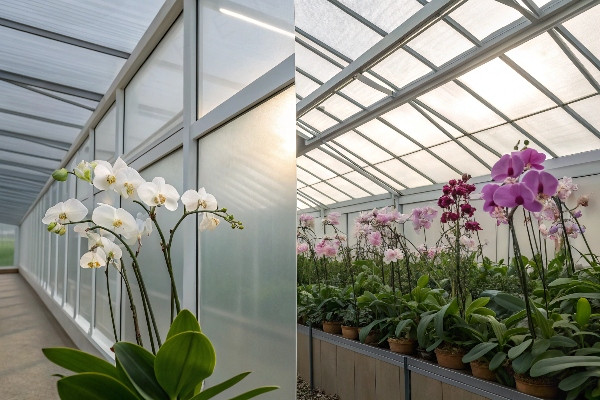
The glazing debate is one I’ve had hundreds of times with clients over my years at CFGET. The choice between glass and polycarbonate isn’t just about aesthetics or budget—it fundamentally shapes your growing environment in ways that directly impact orchid health.
During our greenhouse installation in Malaysia, the intense tropical sun made light diffusion our primary concern. We opted for 8mm twin-wall polycarbonate with a light diffusion layer that reduced hot spots while maintaining excellent light transmission. The results were remarkable—more even growth and flowering across the entire collection without the scorching that had plagued the previous glass structure.
Polycarbonate offers several advantages for orchid growing that make it our most frequent recommendation:
Light Quality Considerations
Orchids generally prefer diffused light rather than direct sunlight. Twin-wall polycarbonate naturally diffuses light, creating a more even growing environment. In our testing, we’ve found that many orchid species, especially Phalaenopsis and Paphiopedilums, show better leaf development under diffused light conditions.
Glass transmits more direct light, which can be both an advantage and disadvantage. It creates more pronounced seasonal variations, which some orchid species appreciate for triggering flowering cycles. However, it typically requires additional shading systems during summer months.
Insulation Value and Climate Control
The R-value (insulation rating) becomes particularly important in extreme climates. Twin-wall 8mm polycarbonate offers an R-value around 1.6, while standard horticultural glass is only about 0.9. For orchid growers in northern Europe or North America, this difference can translate to 30-40% lower heating costs during winter months.
I recall a project in Northern China where winter temperatures regularly dropped below -20°C. The client had initially wanted glass for aesthetic reasons, but after reviewing energy consumption projections, switched to 10mm triple-wall polycarbonate. This decision reduced their heating costs by approximately 45% while maintaining adequate light for their Cymbidium collection.
Longevity and Maintenance Factors
Glass offers superior longevity (25+ years) compared to even the highest quality polycarbonate (15-20 years with UV protective coating). However, polycarbonate is significantly more impact-resistant, an important consideration in areas with hail or debris concerns.
For orchid enthusiasts planning a long-term growing structure, I often recommend considering glass with modern low-E coatings for temperate climates, while polycarbonate remains the better choice for extreme climates on either end of the temperature spectrum.
Essential Systems: Ventilation, Misting, and Heating Considerations?
Many orchid greenhouses fail because of inadequate environmental systems. Without proper ventilation, humidity control, and temperature management, even the most attentive care routines will struggle.
Effective orchid greenhouses require automated ventilation with both passive and active systems, precision misting with pure water, and zone-specific heating solutions. Your climate will determine whether cooling or heating should be your primary investment.
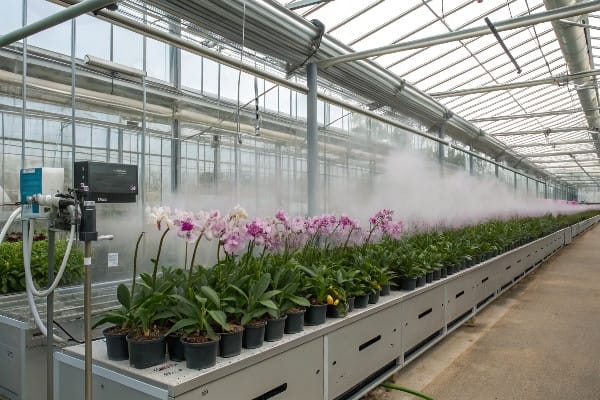
The environmental systems in your orchid greenhouse will ultimately determine your success more than any other factor. In my 28 years designing greenhouse systems at CFGET, I’ve seen perfectly constructed greenhouses fail due to inadequate climate controls, while even modest structures can produce championship orchids with properly designed systems.
Ventilation forms the foundation of any successful orchid greenhouse. During our installation for a research institution in Vietnam, we implemented a multi-tier ventilation strategy that transformed their struggling collection. The system included ridge vents for passive cooling, side wall louvers for cross ventilation, and high-efficiency circulation fans to eliminate microclimates. Within three months, their Dendrobium collection showed dramatic improvement in new growth quality.
Advanced Ventilation Strategies for Orchids
Proper air movement serves multiple critical functions in an orchid greenhouse: it regulates temperature, prevents disease, strengthens stems, and helps manage humidity. I recommend a minimum of three air exchanges per hour for most orchid collections, with capabilities to increase to 8-12 exchanges during summer months.
The most effective ventilation systems combine:
- Passive ventilation (ridge vents, side vents) that operates without electricity
- Active air circulation (horizontal airflow fans) to prevent stagnant air pockets
- Automated controls that respond to temperature and humidity thresholds
For a client in Southeast Asia, we designed a natural ventilation system that eliminated the need for mechanical cooling despite temperatures reaching 38°C. By incorporating roof vents comprising 20% of the floor area and side vents equaling 25% of the floor area, we created a chimney effect that maintained temperatures within 3-5°C of ambient conditions.
Misting and Humidity Management Systems
Humidity management presents a delicate balance for orchid growers. Most orchids prefer 50-70% humidity, yet achieving this consistently without promoting disease requires sophisticated equipment.
Our most successful installations incorporate high-pressure fog systems1 (operating at 1000+ PSI) that produce micron-sized droplets that evaporate before settling on leaves. These systems use significantly less water while providing more effective humidity than traditional misters.
Water quality cannot be overlooked in misting design. During our project in Central Europe, we installed a reverse osmosis system2 integrated with the misting network. This eliminated mineral deposits on leaves and flowers, dramatically improving the presentation quality of their show specimens.
Heating Solutions for Different Climate Zones
Heating system selection varies dramatically based on location. For our Thailand installations, minimal supplemental heating is required, with focus instead on preventing occasional cool-night temperature drops. In contrast, our Northern European projects often require sophisticated multi-zone heating to maintain proper temperature gradients.
Radiant floor heating has proven particularly effective for orchid collections. The gentle, upward heat creates natural air circulation while keeping root zones at ideal temperatures. During a project in Northern China, we implemented a hydronic floor system with multiple zones, allowing the grower to maintain separate areas for cool-growing Masdevallias and warmer-growing Phalaenopsis within the same greenhouse structure.
Structural Choices: Which Greenhouse Designs Work Well for Orchids?
Choosing the wrong greenhouse structure can limit your growing options and create ongoing maintenance issues. Many standard designs fail to address the specific needs of orchid collections.
Orchids thrive in structures that maximize usable growing space while providing appropriate height gradients. Free-standing A-frame or Gothic arch designs offer superior airflow and temperature management, while lean-to structures work well for limited spaces.
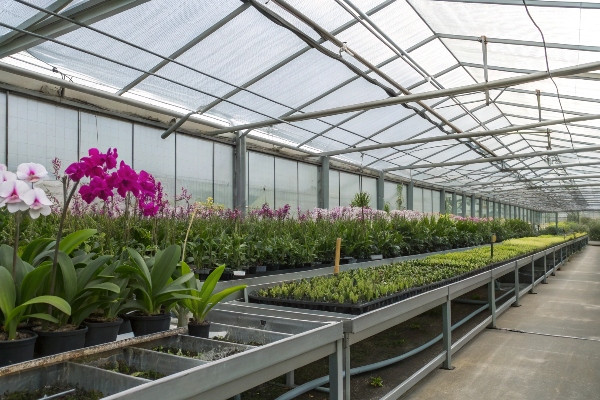
The structural design of your orchid greenhouse influences everything from space utilization to climate management ability. After designing hundreds of orchid-specific structures at CFGET, I’ve identified key architectural elements that consistently produce superior results.
During a recent project for a Cattleya specialist in Europe, we selected a modified Gothic arch design that provided 20% more usable growing space than a traditional A-frame while improving air circulation patterns. The steeper roof pitch allowed snow to slide off while creating ideal hanging space for specimens. Six months after completion, the client reported their first successful flowering of a particularly challenging Cattleya hybrid that had previously failed to bloom.
Optimizing Greenhouse Footprint and Height
The footprint-to-height ratio significantly impacts your ability to create appropriate microclimates. In tropical and subtropical regions, taller structures with heights at least 60% of their width provide superior heat management. For a collector in Malaysia, we designed a greenhouse with a height-to-width ratio of 0.8:1, which maintained temperatures within the ideal range for Phalaenopsis without mechanical cooling.
Bench arrangement flexibility depends largely on your structural design. Gothic arch and A-frame designs typically allow for tiered benching systems that maximize growing space while maintaining appropriate light gradients. For a specialized Paphiopedilum grower in Asia, we created a three-tier bench system within a Gothic arch structure that increased their growing capacity by approximately 40% compared to their previous setup.
Regional Adaptations for Different Climates
Structure selection must account for your specific climate challenges. In high-rainfall tropical areas like parts of Southeast Asia, we typically recommend steeper roof pitches (minimum 6:12) with extended overhangs to manage heavy downpours. For a project in Thailand, we implemented a 8:12 roof pitch that dramatically improved water runoff during monsoon season, reducing humidity spikes that had previously caused fungal issues.
In regions with snow loads, structural reinforcement becomes essential. During our installation in Northern Europe, we increased truss spacing by 25% compared to our standard designs and upgraded from aluminum to steel structural members. This increased material costs by approximately 15% but provided the necessary load-bearing capacity for their heavy winter conditions.
For extreme heat environments, we often recommend north-south orientation with specialized glazing on the east-west exposures. Our project in the Middle East incorporated selectively applied heat-reflecting glazing on western exposures, reducing afternoon temperature spikes by nearly 8°C while maintaining adequate light levels for their Vandaceous orchid collection.
Conclusion
Selecting the ideal orchid greenhouse requires balancing size, materials, environmental systems, and structural design with your specific climate conditions. By focusing on these key elements, you’ll create an environment where your orchids can thrive year-round.

